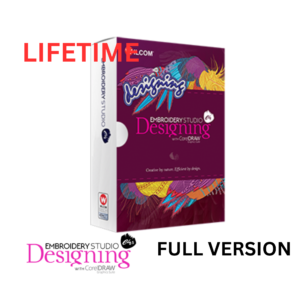Adobe Lightroom is a staple in the world of photo editing and management, renowned for its comprehensive set of tools and intuitive interface. The 2022 version of Lightroom builds on its legacy, offering enhancements and new features that cater to both professional photographers and enthusiasts. This blog provides a detailed exploration of Lightroom 2022, covering its new features, enhancements, and how it compares to previous versions, as well as tips and tricks for maximizing its potential.
1. Introduction to Adobe Lightroom 2022
Adobe Lightroom 2022 continues to be a powerful tool for photo editing and management. It is part of Adobe’s Creative Cloud suite and is available in several versions, including Lightroom Classic, Lightroom (Cloud-based), and Lightroom Mobile. Each version serves different needs, but all share core functionalities that make Lightroom a go-to choice for many photographers.
Key Features of Lightroom 2022:
- Enhanced Performance: Faster performance and improved user experience.
- AI-Powered Tools: Advanced AI features for automated adjustments and enhancements.
- Improved Editing Capabilities: Expanded toolsets and refined editing options.
- Seamless Cloud Integration: Better synchronization between desktop and mobile versions.
- New Presets and Profiles: Updated presets and profiles for enhanced creative options.
2. Getting Started with Lightroom 2022
Before diving into advanced features, it’s crucial to understand how to get started with Lightroom 2022. This section will guide you through installation, initial setup, and basic navigation.
2.1 Installation and Setup
- Purchase and Download:
- Adobe Lightroom 2022 is available via Adobe’s Creative Cloud subscription. Purchase a plan that suits your needs and download the software from the Adobe website.
- Install the Software:
- Follow the installation prompts to set up Lightroom on your computer. Ensure you have the latest system updates and meet the software requirements.
- Create or Log In to an Adobe ID:
- If you don’t have an Adobe ID, create one during the setup process. If you already have one, log in to activate your subscription.
- Initial Configuration:
- Upon first launch, Lightroom will guide you through the initial configuration, including preferences and workspace setup.
2.2 Navigating the Interface
- Library Module:
- This is where you import, organize, and manage your photos. It includes features for sorting, filtering, and tagging your images.
- Develop Module:
- The core of photo editing in Lightroom. It offers tools for adjusting exposure, color balance, sharpness, and more.
- Map Module:
- Allows you to view and organize your photos based on their geographical location.
- Book Module:
- Helps you create photo books and layouts.
- Slideshow Module:
- Create and customize slideshows of your images.
- Print Module:
- Provides tools for printing your images or creating print-ready layouts.
- Web Module:
- Allows you to create web galleries and export them for online sharing.
3. Key Features and Enhancements in Lightroom 2022
Lightroom 2022 brings several enhancements and new features that improve the user experience and expand creative possibilities.
3.1 Performance Improvements
- Faster Editing: Lightroom 2022 has optimized performance, making photo editing quicker and more responsive. This includes faster rendering of previews and quicker switching between modules.
- Enhanced Workflow: Improved performance in the Develop module allows for smoother adjustments and real-time feedback.
3.2 AI-Powered Enhancements
- Enhance Details: The AI-powered Enhance Details feature improves image quality by increasing resolution and sharpening fine details. This is particularly useful for high-resolution prints.
- Auto-Enhance: Lightroom’s AI automatically adjusts your photos to enhance exposure, contrast, and color balance. You can fine-tune these adjustments to fit your style.
3.3 New and Improved Editing Tools
- Masking Tools: New masking tools, including AI-powered subject and sky masks, make it easier to target specific areas of your photo for detailed adjustments.
- Color Grading: Expanded color grading tools allow for more precise control over color and tone adjustments. You can now apply color grading across the highlights, midtones, and shadows separately.
3.4 Cloud Integration and Syncing
- Seamless Syncing: Lightroom 2022 offers improved synchronization between desktop and mobile versions. Changes made on one device are reflected across all devices linked to your Adobe ID.
- Cloud Storage: Increased cloud storage options allow you to back up your photos and access them from anywhere. The cloud-based version of Lightroom ensures that your edits are always available.
3.5 Presets and Profiles
- New Presets: Lightroom 2022 includes new presets designed to emulate popular photography styles and creative looks. These can be a great starting point for your edits.
- Custom Profiles: You can create and save custom profiles for consistent editing across your photo library. This feature allows you to apply a specific look or style to multiple images quickly.
4. Advanced Editing Techniques in Lightroom 2022
With Lightroom 2022’s advanced editing tools, you can take your photo editing to the next level. Here are some techniques to explore:
4.1 Using the Adjustment Brush
- Targeted Adjustments: The Adjustment Brush allows for precise edits on specific areas of your photo. Use it to adjust exposure, contrast, clarity, and more in localized areas.
- Custom Brush Settings: Customize your brush size, feathering, and flow to achieve the desired effect.
4.2 Working with the Gradient Filter
- Linear and Radial Gradients: Apply linear or radial gradients to make gradual adjustments to your photos. This is useful for enhancing skies or creating vignette effects.
- Fine-Tuning Gradients: Adjust the gradient’s position, size, and feathering to blend seamlessly with your photo.
4.3 Mastering Color Grading
- Three-Way Color Grading: Adjust colors in the shadows, midtones, and highlights separately to create a unique look. This feature provides greater control over the overall color balance of your image.
- Color Wheels: Use color wheels to fine-tune color adjustments and achieve precise color grading.
4.4 Leveraging AI-Powered Features
- Sky Replacement: The AI-powered sky replacement tool allows you to replace or enhance the sky in your photos. This feature provides several sky options and seamless blending.
- Subject Selection: Automatically select and adjust specific subjects in your photos. This is useful for making changes to portraits or isolating objects.
5. Organizing and Managing Your Photos
Efficient photo management is crucial for any photographer. Lightroom 2022 provides several tools to help you organize and manage your photo library effectively.
5.1 Importing Photos
- Import Settings: Customize import settings to apply metadata, keywords, and develop settings during import. This streamlines your workflow and saves time.
- Folder Structure: Organize your photos into folders based on projects, events, or dates. Use the import dialog to set up folder structures and naming conventions.
5.2 Cataloging and Tagging
- Keywords and Metadata: Add keywords and metadata to your photos for easy searching and organization. Use the Keyword List panel to manage and apply keywords.
- Collections: Create collections to group photos based on themes, projects, or client needs. Collections provide a flexible way to organize and access your images.
5.3 Using Smart Collections
- Automatic Grouping: Smart Collections automatically group photos based on criteria you set, such as ratings, keywords, or metadata. This feature helps keep your library organized without manual intervention.
6. Exporting and Sharing Your Photos
Once your edits are complete, Lightroom 2022 offers several options for exporting and sharing your photos.
6.1 Export Settings
- File Formats: Export your photos in various formats, including JPEG, TIFF, and DNG. Choose the format based on your intended use, whether for web sharing or print.
- Resolution and Quality: Adjust resolution and quality settings to balance file size and image quality. Use higher resolution settings for print and lower settings for web use.
6.2 Creating Presets for Export
- Custom Export Presets: Save export settings as presets for consistent and efficient exporting. This feature allows you to apply the same settings to multiple photos quickly.
6.3 Sharing Directly from Lightroom
- Web Galleries: Create and share web galleries directly from Lightroom. Customize gallery layouts and share links with clients or friends.
- Social Media Integration: Lightroom 2022 supports direct sharing to social media platforms. Connect your accounts and post photos without leaving the application.
7. Comparing Lightroom 2022 with Previous Versions
Understanding how Lightroom 2022 compares to previous versions can help you appreciate its new features and improvements.
7.1 Lightroom Classic vs. Lightroom (Cloud-based)
- Lightroom Classic: Focuses on desktop-based editing and is ideal for photographers who prefer local storage and advanced file management.
- Lightroom (Cloud-based): Offers seamless cloud integration and is designed for photographers who want access to their photos across multiple devices.
7.2 Enhancements Over Previous Versions
- Performance: Lightroom 2022 has improved performance and speed compared to earlier versions, making photo editing and management more efficient.
- AI-Powered Tools: The introduction of AI-powered features enhances photo editing capabilities, providing more automated and precise adjustments.
8. Tips and Tricks for Lightroom 2022
To make the most of Lightroom 2022, consider the following tips
and tricks:
8.1 Keyboard Shortcuts
- Efficiency: Learn keyboard shortcuts to speed up your workflow. Common shortcuts include
Dfor Develop module,Gfor Library module, andMfor the Masking tool.
8.2 Backup Your Catalog
- Regular Backups: Regularly back up your Lightroom catalog to avoid data loss. Use the catalog backup feature in the Preferences menu.
8.3 Utilize Presets
- Save Time: Create and use presets for common adjustments to streamline your editing process. Customize and save presets based on your editing style.
8.4 Explore Creative Possibilities
- Experiment with Tools: Don’t be afraid to experiment with new tools and features. Exploring different editing techniques can lead to unique and creative results.
9. Troubleshooting Common Issues
Even with advanced software like Lightroom 2022, you may encounter some issues. Here are common problems and solutions:
9.1 Performance Issues
- Slow Performance: If Lightroom is running slowly, try optimizing your catalog, increasing RAM allocation, or updating your graphics driver.
9.2 Syncing Problems
- Cloud Sync Issues: If you experience problems with cloud syncing, check your internet connection, ensure you’re logged into the correct Adobe ID, and verify cloud storage settings.
9.3 Import Errors
- Failed Imports: If you encounter import errors, check file formats, ensure your import settings are correct, and verify that your storage devices are functioning properly.
10. Conclusion
Adobe Lightroom 2022 represents a significant advancement in photo editing and management, offering a range of new features and enhancements that cater to both professionals and enthusiasts. From AI-powered tools and improved performance to seamless cloud integration, Lightroom 2022 provides a comprehensive solution for managing and editing your photos.
Whether you’re new to Lightroom or an experienced user, exploring the new features and capabilities of Lightroom 2022 will help you make the most of this powerful tool. By understanding its features, mastering advanced editing techniques, and utilizing best practices for photo management, you can enhance your photography workflow and achieve stunning results.
As you continue to work with Lightroom 2022, remember to stay updated with Adobe’s latest releases and improvements. The world of photo editing is constantly evolving, and staying informed will help you make the most of your tools and continue producing exceptional work. Happy editing!




